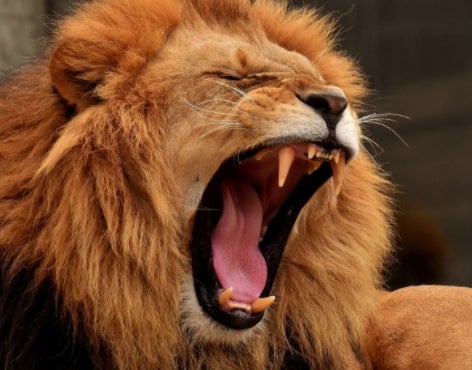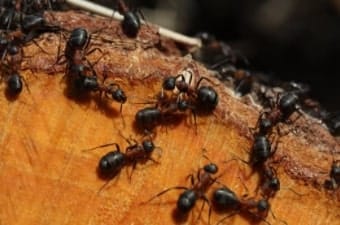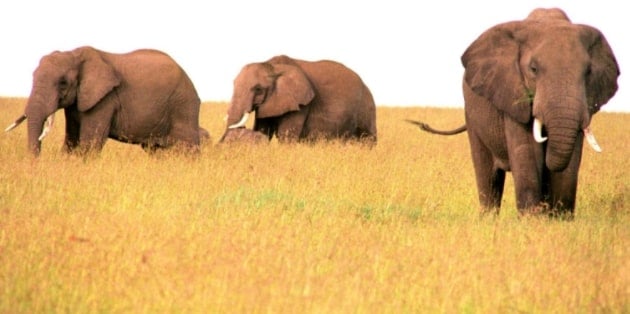Here is our list of the best examples of animals that work together in nature.
Animals that work together in nature are species that cooperate in activities such as hunting, migrating, protecting members, and securing territories. For example, ants, beavers, and buffaloes. Emulating these animals can help you improve your teamwork.
This information can indirectly help you improve cooperation in the workplace and boost team building skills.
This article covers:
- examples of teamwork in the animal kingdom
- animals that use teamwork to survive
- examples of cooperation in nature
- animals that help other animals
Here we go!
List of animals that work together in nature
Animals that work together have amazing organizational structures, behaviors, and traits to help them thrive in their habitats. Here is a list of collaborative animals and lessons to learn from these creatures.
#1. A pride of lions

Prides of lions are one of the leading examples of teamwork in the animal kingdom. Lions are the only big cats with a social life, and they live in a pride of 2 to 40 members. This social structure is crucial for the lions’ survival.
Here are key management lessons from lions.
Teamwork
Lions prefer hunting big game to feed a large pride. Lions’ prey includes buffalos, wildebeest, zebras, and elephants. Taking down these huge animals is a daunting task and requires the pride’s cooperation.
Tip: Employees need each other’s contributions to handle challenging tasks. When staff unite and collaborate, it becomes easier to achieve big objectives.
Here is a list of quotes about teamwork and respect.
Strategy
Lions take time to study a herd before deciding on the animal to kill. Usually, lions look for openings by seeking out weaknesses, such as a sick, hurt or lone animal.
Tip: Analytical managers take time to make decisions and take advantage of opportunities. Marketers and product developers should take advantage of market gaps to outdo competitors.
Check out this list of books on business strategy.
Delegation of duties
When hunting, each lion takes up a specific position and role. As lions fan out to surround the prey, the younger and weaker lions drive prey to the center. Meanwhile, the other strong lions attack from the sides and front.
Tip: Clearly defining employees’ jobs and responsibilities improves productivity. Effective duty delegation involves engaging employees in the best-suited jobs.
Discipline
A strict discipline exists in the lion’s kingdom. For instance, the alpha males own the mating rights with pride females. If a younger male lion courts pride females, then the alpha lion fights them as a warning. However, if misbehavior persists, then the pride king excommunicates the erratic members from the pride land. For instance, when the young lions mate with pride lionesses.
Tip: HR professionals learn a few disciplinary tips. For example, erratic employees deserve a second chance to improve their behavior. However, employees who disregard rules or refuse to submit to authority may end up terminated from employment.
Authority
The scope of a lion’s authority is as far as its territory stretches. When non-pride lions invade, the alpha male asserts authority by roaring and sometimes engaging in a fight.
Tip: Managers should never ignore conflicts but should act upon the issues quickly. Leaders also need good strategies for resolving disputes, say through positive public relations and negotiations.
Partnership
When young lions mature, they break out from the pride to seek new territories. In such cases, they maintain a friendship with the original pride. Such bonds allow the lions to make partnerships to protect the new pride and for hunting.
Tip: Companies need to form strategic partnerships to counter unhealthy competition, gain more significant market share, and gain expertise. Also, maintaining positive relationships with former employees can be advantageous for organizations.
#2. A herd of cape buffaloes

Cape buffalos are one the best examples of cooperation in nature. The buffaloes are famous for being the best predator killer and part of the African “Big Five” animals. These large species often live in herds of 50 to 500 heads, consisting of males, females, and young calves.
Here are management lessons to learn from the cape buffalo.
Unity of purpose
Cape buffalos live in large numbers to discourage predators’ advances. When cornered, the strong buffaloes form a united front to protect the rest of the herd. In extreme cases, buffaloes stampede on the predators.
Tip: Unity of purpose is the approach managers use to influence followers in the required direction. For instance, team members with a shared vision contribute individually and achieve common goals more quickly.
Empathy
Buffalo’s protect their own. For instance, if an animal is wounded and cannot move at an average pace, then strong buffalos surround it to protect it from predators like lions and hyenas. In addition, When a buffalo is captured and sends a distress call, buffalo herds within proximity come to its aid.
Tip: Empathy strengthens team spirit and enhances trust and belongingness.
Inclusion
Typically buffalo herds are social groups and do not discriminate on their own. Stronger buffaloes linger around the sick and wounded members to offer protection until those weak animals regain strength. Disabled buffaloes also enjoy the herd’s safety and security.
Tip: Diversity and inclusion foster confidence in weaker or disadvantaged employees.
Here is a list of virtual inclusion exercises.
Communication
Though buffalos have poor sight, they use their strong sense of scent to locate predators and warn the herd. Buffaloes combine intonation with grunts, bellows, and snorts to pass across different messages.
Tip: Effective communication enhances service delivery. Employees receive and interpret info, feedback, and alerts better when they understand their organizations’ communication mode and process.
Check out this list of communication activities.
Want some free team building tools?
$49 value (100% free)
- 100+ fully tested icebreaker questions
- 24+ themed Bingo generators
- 5+ PDFs (including the 8% Rule)
- 2024 team building calendar
- and more...

Enter your email for instant access
#3. A colony of ants

Ants are tiny animals that use teamwork to survive. These insects exist in over 12,000 species. Each species lives in colonies that accommodate up to a million ants, consisting of a queen, female workers, and males.
Here are interesting management tips from ants.
Planning and organization
Ants gather food and build mounds in summer as preparation for winter. During the cold season, ants feed on stored food and hibernate.
Tip: Planning helps prepare for uncertainties, evades predictable risks, and improves the odds of success.
Delegation in teams
Colonies thrive because the ants have well-defined roles. For instance, male ants fertilize the eggs, and the queen lays the eggs. Female ants work as food gatherers, babysitters, anthill builders, and soldiers to protect the queen and the colony.
Tip: Delegation improves efficiency and productivity. Segregation of duties also enhances learning and expertise.
Commitment
Ants devote their lives to protecting the queen and the colony. Usually, a queen can live up to 30 years and is rarely replaced. If the queen dies, then the entire colony may be extinguished because other female workers do not reproduce. In the event of invasion, ants fight opponents to death.
Tip: Commitment and loyalty cause teams to thrive and yield amid challenges like competition.
#4. A pack of African wild dogs

With a hunting success rate of 80%, the African wild dog is the most successful hunter in Africa. The dogs live in packs of up to 50 members and follow the male and female alpha pair.
Here are some lessons to learn from the African wild dog.
Cooperation
These dogs are similar in size to the domestic dog but can hunt a game as big as a mature wildebeest. First, the hunters liaise to separate the target prey from the herd, then chase the prey to exhaustion, and finally kill the target.
Tip: Continuous cooperation and teamwork are crucial for success.
Consistency
When hunting, the African wild dogs run at a speed of up to 44 mph, around 60kph. As a result, these dogs can continuously keep up with the chase for up to 3 hours. This consistency contributes a lot to the dogs’ hunting success.
Tip: Consistency in employees breeds self-discipline and enhances learning. In organizations, consistency accelerates progress, such as employee training and customer acquisition and retention.
Communication
The African wild dogs use high-pitched calls and barking sounds to communicate their location with fellow pack members. This process helps dogs who may have strayed or gotten lost during the run to rejoin the pack.
Tip: Leaders need proper communication skills to give direction, coordinate employees, and make workflow effective.
Leadership
A pack of wild dogs has complex hierarchies, with the alpha pair at the top. Either leader from the pair provides direction to the pack.
Tip: Good leadership involves using strategic and critical thinking to influence followers towards the right goals. Also, autonomy in leadership improves creativity and builds trust across hierarchies.
Check out this list of leadership skills.
Team support
Wild dogs fend for sick pack members and the litter. It is common for this species to spare food for the absent members. For instance, the dogs regurgitate meat for weaker dogs until they can fend for themselves.
Tip: Team support and empathy strengthen social ties, build tolerance, and increase trust in members.
#5. An elephant herd

Elephants have a good memory and are among the world’s smartest animals. Elephant herds exhibit some of the best examples of teamwork in the animal kingdom. Here are lessons to learn from the elephants.
Experience
Elephant groups are matriarchal, and leadership is usually reserved for the oldest female elephant in the group. Matriarch elephants use memory and experience to lead and ensure the herd’s survival. From years of experience, the leaders know how to source medicinal plants, where to find food and water during drought, and the predator realms to avoid.
Tip: Experience and exposure are crucial factors to consider when choosing leaders. Knowledgeable leaders have the wisdom to make better decisions and connections to increase company success rates.
Leadership development and transition
Elephant herds typically consist of related females, like daughters, sisters, and nieces, with their calves. The matriarch grooms older females to take over leadership when the matriarch is too old, weak, or dies.
Tip: Leadership development through coaching and mentorship produces strong-willed and knowledgeable leaders. Furthermore, preparation for leadership transition is crucial for the continuity and success of the organization.
Culture development
Matriarchs lead by providing guidance and influencing the behavior of the herd. Herd members also rely on matriarchs’ wisdom and teaching to raise the young.
Tip: Leaders have the power to influence employee behavior and drive organizational culture changes.
Check out this list of books on company culture.
Team bonding
Elephants are social animals that graze in herds. Aside from the matriarchies, males attach to bachelor herds. In both groups, elephants exhibit friendship and bonding through behaviors like patting one another’s heads with their ears and intertwining trunks.
Tip: Bonding activities like team building are essential in promoting employees’ social welfare.
Here is a list of virtual team bonding ideas.
Conflict resolution
Elephants use dominance and hierarchies to settle conflicts, for example, when fighting over scarce resources like food.
Tip: Establishing a proper scalar chain is an effective method for handling issues in the organization. For instance, if employees cannot reach an agreement, escalating issues to the next higher person on the chain helps resolve those problems.
Check out this list of conflict resolution books.
#6. A flock of the Arctic tern

The Arctic terns have the longest migratory route among all animals. The terns cover up to 59,000 miles per year.
Here are management lessons to learn from the Arctic terns.
Commitment
The Arctic terns are aggressive when threatened. For instance, the birds gang up to scare or attack the enemy using noise and pecking.
Tip: Commitment to purpose enables leaders and their employees to tackle challenges and threats effectively.
Resource utilization
When migrating, the Arctic terns save their energy and glide in the breeze.
Tip: Using available resources and opportunities saves costs, enhances efficiency, and reduces burn out.
Teamwork and strategy
As the birds fly over the sea, they look out for and identify prey. Then, the terns plunge in unison to attack and scoop their prey, mostly fish. This tactic is efficient and ensures that the flock has sufficient provisions for the long journeys.
Tip: Teamwork enables fast execution of jobs. Moreover, when combined with strategy, teams experience improved efficiency.
#7. A waddle of penguins

Penguins provide practical examples of cooperation in nature. These birds are highly social and do almost all activities together. For instance, penguins nest, hunt, and feed as a community.
Job rotation
The Arctic region gets extremely cold during winter. To survive the chills, penguins huddle for warmth. The penguins take turns standing at the edge of the flock and act as a shield from the cold winds.
Tip: Job rotation and work shifts are crucial in controlling overburden and burnout among staff.
Shared responsibility
Penguins pair to mate, and once the female lays an egg, she hands it to her partner. The male holds the egg between its feet, never letting go till the chick hatches.
Tip: Sharing responsibility and focusing on the goal fuels results.
Partnership
Penguins co-parent to raise their young. During the brooding, females migrate in search of food for the young ones yet to hatch.
Tip: Partnerships enhance the growth, continuity, and success of businesses.
#8. A colony of beavers

Beavers are the largest rodents in Northern America and among the best examples of animals that naturally work together. Also known as the ecological engineers, beavers construct dams and lodges to enhance their survival.
Here are some management basics to learn from beavers.
Job shadowing
Using mud and sticks, Beaver parents construct safety bunkers, also known as lodges. Meanwhile, beaver kids emulate their parents and eventually acquire engineering skills. Young beavers also learn food preservation from the older beavers.
Tip: On-job training best is among the best ways to impart skills to staff. Shadowing employees get hands-on experience from experts and are likely to perform very well.
Planning
Beavers construct lodges to store provisions. These lodges have ventilated roofs for aeration and underground entrances to prevent predators’ access.
Tip: Tact helps maneuver threats and challenges, and strategic planning counters foreseen risks.
Creativity and innovation
Beavers tactfully modify their habitat. These creatures create dams using logs to slow water flow and prevent erosion of lodges. The dams create new habitats for wetlands species.
Tip: Innovation elements like ideation and value creation are critical in forming a new product. Creativity adds value to products and makes them stand out.
Here is a list of books on innovation.
#9. A swarm of honey bees

Honeybees are a popular example of animals that use teamwork to survive. These insects live in a hive of about 50,000 bees.
Here are valuable management lessons from the honey bees.
Segregation of duty
Every member of a hive has a specific role to play. For instance, the males, aka drones, are only responsible for mating with the queen, and females are responsible for various assigned jobs like foraging and security.
Tip: Companies with large employee numbers need proper segregation of duty and responsibility to boost productivity.
Branding
Bees from the same hive share the same pigment identification. This color code distinguishes different colonies and enhances defense.
Tip: Brand management enhances products’ trust, recognition, and loyalty to enable marketers to counter competition.
Disaster management
Bees can feel the hormones produced by potential predators. If the bees sense danger, then they send signals that alert other bees to prepare for an attack.
Tip: Effective disaster management requires prompt communication, risk preparedness, and the ability to challenge.
Conclusion
Animals adapt to different mechanisms to ensure their survival. Several species have survived the test of time due to the ability to work together, for example, the lions, arctic terns, and beavers. These animals collaborate to protect themselves, find food, and escape predators. By studying the social life of these collaborative animals, employees learn critical tips to apply in the workplace. These examples include the lions’ teamwork, the ants’ duty delegation, and the honey bees’ disaster management.
Feel free to check out these lists of team bonding questions and team building quotes.
